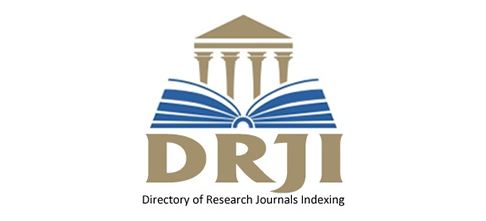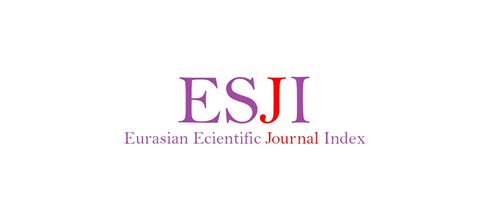MAKALENİN TÜRKÇE BAŞLIĞI
Adı SOYADI*
ÖZET
Makalenin ilk sayfasında 11 punto olarak Türkçe ve İngilizce başlık, Times New Roman ve 9 punto olarak 200 kelimeyi geçmeyecek Türkçe ve İngilizce özet ile en az 5, en fazla ise 7 adet olmak üzere Türkçe ve İngilizce anahtar kelimeler bulunmalıdır. Özet ve Abstract başlıkları hepsi büyük harflerle 11 punto yazılmış şekilde (ÖZET / ABSTRACT) sayfaya ortalanmış olmalıdır.
Anahtar Kelimeler: Anahtar Kelime, Anahtar Kelime, Anahtar Kelime, Anahtar Kelime, Anahtar Kelime.
MAKALENİN İNGİLİZCE BAŞLIĞI
ABSTRACT
The title should be written in Turkish and English with 11 font size, Turkish and English abstracts should contain no more than 2000 words with Times New Roman 9 font size, and include 5 to 7 keywords in Turkish and English.
Keywords: Keyword, Keyword, Keyword, Keyword, Keyword.
GİRİŞ
Terörizm ve Radikalleşme ile Mücadele Araştırmaları Dergisine gönderilecek çalışmaların içeriği şu sıraya uygun olmalıdır. Çalışmanın başlığı, özet, abstract, anahtar kelimeler, giriş, yöntem, sonuçlar, tartışma, kaynakça, ekler, tabloların listesi, şekillerin listesi. Giriş ve sonuç bölümlerine numara verilmemelidir.
Makale metinleri Times New Roman 11 punto, önce ve sonra 6nk ve birden çok, 1,15 satır aralığında yazılmalıdır. Dipnotlar Times New Roman 8 punto, önce ve sonra 6nk ve birden çok, 1,15 satır aralığında yazılmalıdır. Dipnot gösterimi için 1, 2, 3 şeklinde rakamlar kullanılmalıdır. Alıntı dipnotlarda kaynakça gösterilmelidir. Hizalama iki yana yaslı olmalı, satır/paragraf başları için 1 cm boşluk bırakılmalıdır.
Kenar boşlukları sağ: 2,5 cm, sol: 2,5 cm, alt: 2,5 cm, üst: 2,5 cm, kâğıt ölçüsü A4 olacak şekilde hazırlanmalıdır. Üst ve alt bilgi 2,5 cm olmalıdır. Sağ ve sol girintiler 0 olarak ayarlanmalıdır.
1. BİRİNCİ BAŞLIK
Makaleler için en fazla beş alt başlık sistemi kullanılmalıdır. Başlıklar sola yaslanmış olmalıdır. Birinci derece ana bölüm başlıklarının, büyük harf ve koyu olarak yazılmalıdır. İkinci derece alt bölüm başlıkları koyu ve her kelimenin ilk harfi büyük olarak yazılmalıdır. Üçüncü derece başlıklar koyu, italik ve her kelimenin ilk harfi büyük olarak yazılmalıdır. Dördüncü derece başlıkların ilk harfi büyük, 11 punto ve yalnızca birinci sözcüğün ilk harfi büyük olarak yazılmalıdır. Beşinci derece başlıklarda birinci sözcüğün ilk harfi büyük ve italik olarak yazılmalıdır.
Örnek;
2. KAVRAMSAL ÇERÇEVE
2.1. Terör ve Terörizm
2.1.1. Terörizmin Çeşitleri
2.1.1.1. Etnik terörizm
2.1.1.1.1. Etnik terörizmle mücadele yöntemleri
2. İKİNCİ BAŞLIK
Her tablo ve şekil için sıralama numarası verilmeli (Tablo 1, Şekil 1 vb.) tablo ve şekillerin başlığı üstte bulunmalı, ortalanmış ve ilk harfleri büyük olacak şekilde, 10 puntoda yazılmalı, başlık ile tablo ve şekil arasındaki boşluk 1 satır aralığı olmalıdır. Tablo, şekil ve grafiklere ilişkin kaynaklar; ilgili tablo, şekil veya grafiğin başlığının devamına (Kaynak:) yazılmalıdır. Tablo ve şekil içeriği Times New Roman 10 punto olarak yapılandırılmalıdır (Sayfa durumuna göre 9 veya 11 punto da kullanılabilir). İstatistikler için virgülden sonra üç haneden fazlası yazılmamalıdır.
3. ÜÇÜNCÜ BAŞLIK
SONUÇ
Sonuç bölümünde araştırma sonucunda elde edilen bulgular ve müteakip araştırmalar için tavsiyelere yer verilecektir.
KAYNAKÇA
• Kaynakça 11 punto olarak, önce ve sonra 6nk ve 1 satır aralığında ve soyadı alfabetik sırasına göre düzenlenecektir.
• Kaynakça ikinci satırdan itibaren 1 cm içeride olacak şekilde ayarlanmalıdır.
• Kaynakçada, kitaplarda sayfa numaraları belirtilmeyecek, makalelerde derginin ilgili sayfa aralığı belirtilecektir.
• İnternet kaynaklarında erişim tarihi mutlaka belirtilecektir.
• Kaynakça ile ilgili ayrıntılı hususlar için APA’nın (American Physchology Association) bilimsel yazı kriterlerine, Publication Manual of American Psychological Association veya Dergi Park Yazım Kurallarına bakınız.
* Dr. Öğr.Üyesi, Hacettepe Üniversitesi, Uluslararası Güvenlik ve Terörizm Bölümü, yazarınadısoyadı@gmail.com, ORCID ID: https://orcid.org/0550- 0781- 8657-178X.
Makale Geliş Tarihi: 10 Kasım 2021 Makale Kabul Tarihi: 28 Kasım 2021

















